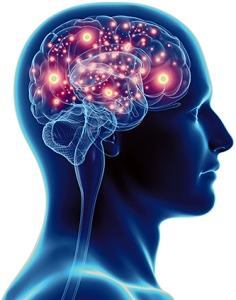 Stress Headaches
Stress Headaches
By Laurie Mueller, BA, DC, CFMP
Origins of the Stress Headache..
Headaches are a common condition presenting to chiropractic offices. This article will focus on the specific anatomy contributing to the stress headache, also known as the muscle tension headache. Stress can come from mental or physical sources. Emotionally it can come from small things, like irritation in traffic, or from something more serious, like going through a divorce, having anxiety or worry, or having a difficult time at work. Day-to-day demands are certainly a source of stress for many people. Physical stress can be another strong contributor. It can stem from poor posture, prolonged ill-positioning, repetitive motions (assembly line at work for example), or injuries (sprain/strain or whiplash). Whether mental physical, or both, the final result can be muscle tension. This is commonly seen in today’s world where so many individuals are over-stressed with life’s responsibilities. Sedentary lifestyles and workstations, such as sitting at desks and computers for long hours at a time, can also contribute to the problem.
Muscles and Bones
Many different muscles can be involved with tension, but for headaches, our top muscular culprits include the suboccuipital muscle group and the trapezius. This is especially true of our desk workers who may be ill positioned ergonomically, with their heads hanging forward in anterior weight bearing, putting tension into the suboccipitals.
The suboccipitals include rectus capitis minor and major, and obliquus capitis inferior and superior. We’ll also knowledge a few neck muscles that cancontribute like the splenius, semispinalis, and SCM. These all have attachments on the skull, most of them on the occipital bone at the back of the skull. The different muscles insert at various locations in the upper cervicals and all the way down to the upper thoracics.
Tension in these muscles can easily cause stress to other muscles of the skull and contribute to subluxations of the occiput, neck, and upper back.
The trapezius is our giant diamond-shaped muscle that covers the back. We see the left half of it in this diagram. It has attachments on the occiput, nuchal ligament, spinous process of C7-T12, lateral third of the clavicle, and scapula. When someone gives you a shoulder rub, they are actually massaging the upper belly of the trapezius muscle. That muscle belly is a common place to find spasm and trigger points, and it is a big contributor to neck discomfort and headache.
Management of Stress Headache
Ergonomics, how the patients position themselves at their workstations, will be an issue that the doctor will explore and try to remedy with the patient. If positioning is bad and not corrected, then the patients may find themselves in an endless cycle of muscle spasm and subluxation. The goal is to find causative factors and help remedy them.
During the course of examination and diagnosis, the doctor will also rule out other headache headache types (such as migraine, which could have a different origin), or other conditions such as food sensitivities. Occasionally, doctors may even find or suspect serious, such as brain tumors, and need to refer out.
Headaches invariably go hand in hand with muscle spasm and subluxations, and so adjusting the needed segments is a first line of defense in a chiropractic office.
Muscle/trigger-point work/stretching should be expected. The doctor may perform this technique if the office doesn’t have a massage therapist in-house. This can be coupled with muscle strengthening exercises that the patient performs at home.
Passive care modalities can also be used and are often administrated by the CA. This could include ice, heat, ultrasound, or electric stimulation (EMS) over the spasmed muscles.
Special Considerations
Note that we never perform EMS over the thyroid gland or the carotid sinus area. Why? Because stimulation of the gland could cause a hormonal surge, and the carotidsinus is full of baroreceptors, which tell the brain about blood pressure. Stimulation in this region can cause a dramatic drop in blood pressure and the patient could pass out.






